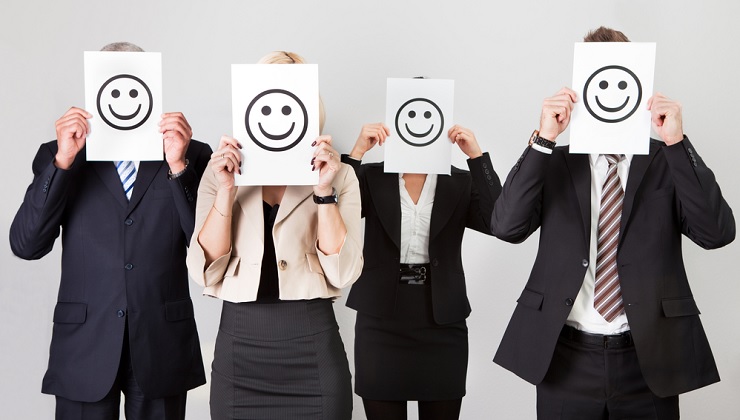Psychological safety in the Workplace is an issue that few managers pay attention to, but it is as important as employees’ physical safety. According to statistics, the feeling of belonging and mental security in the Workplace increases the productivity of people by 56% and reduces the probability of employee turnover by half. Psychological safety in the Workplace is more critical for women. In many companies, female employees feel that because of their gender, they cannot show their work potential and use opportunities for advancement. In this article, we examine what psychological safety means, why it is essential, and how managers of organizations can create a safe environment for their employees.
What is meant by psychological security?
You have mental security when you can express your ideas and opinions without fear of humiliation in the Workplace, judgment of others, or embarrassment. Safety (both physical and psychological) is one of the basic human needs, so without protection, you cannot strive for growth and prosperity and take advantage of your opportunities.
Professor Adamson, a professor at Harvard Business School, first used the term “psychological safety in the workplace” and said that team members could reduce the risks of teamwork and possible conflicts by believing in and following this concept. When team members feel psychologically safe, they will come up with their ideas and not be afraid to speak up. Professor Adamson says to create psychological safety in organizations and workplaces, you need to develop norms and ask everyone to participate. Bars mean behaviors considered laws, and not complying with them is punished.
Eight Reasons for the Importance of Creating psychological safety in the Workplace
Mental safety in the Workplace is as important as physical safety. Just as you take care that employees use safety equipment or that devices work correctly, you should also care about the psychological safety of your employees. The reasons for the necessity of creating a safe environment for the psyche of employees and its advantages are:
- When employees feel psychologically safe, they participate in activities, interact with each other, and do not fear being judged.
- The organization’s members will not be mocked because of their gender, ethnicity, or tastes, and the organization will be integrated and empathetic.
- When team members feel safe, they express their opinions, and creative and new ideas emerge from these opinions. When brainstorming on a topic, many ideas don’t come up simply because the owner didn’t feel like expressing them.
- Psychological security in the Workplace provides more well-being for employees, many of their mental concerns and stress factors are reduced, and as a result, they will perform better.
- When team members feel psychologically safe and have job satisfaction, they become brand ambassadors and talk about their ideal work environment wherever they are.
- Employees stay in safe environments and do not need to change jobs. As a result, the turnover of employees is reduced, and resources and time are saved to a great extent.
- When employees feel psychologically safe, they take risks and are not afraid to make mistakes. Intelligent risk-taking leads to success rather than negative consequences.
- All these benefits lead to improved organizational performance and greater efficiency.
How to create mental security in the Workplace?
Action is always more effective than talk. Remember that organizational culture is a reflection of your behavior or that of other managers in the organization. So, the first step to creating mental security in the Workplace is to adhere to this concept in your behavior. Over time, the organization’s members will follow you as an example, and psychological security will become one of the characteristics of your organizational culture.
To create psychological security in the Workplace, you must develop norms and follow the criteria yourself so that, over time, the employees will also observe the standards.
Methods of creating psychological security in the Workplace
- Improve your employees’ communication skills by holding meetings, asking for feedback, and actively listening.
- If an employee is shy about speaking up or sharing their opinions, don’t ignore them. Ask him to talk and tell him he cannot express his creative ideas or discuss his concerns with this behavior.
- Encourage others to express their opinions; No one in the organization should be afraid to express their opinion, even if they want to say something against what you say.
- Admit your mistakes. Sometimes even tell your employees the story of your mistakes so they understand that you are not flawless either.
- If one of your employees makes a mistake, react without destroying their character or psychological security.
- Empathize with employees, especially employees who talk less. Interact with others without judgment and accept any point of view.
- When you meet with employees, please take a few minutes to greet them or ask them random questions to show them they are important to you regardless of their role in the organization.
- Have an anxiety party! At this party, each employee can talk for 10 minutes about their worries and concerns in the work environment. Doing this strengthens the organization’s spirit of empathy, active listening, and non-judgment.
- Before holding a meeting or brainstorming, announce the topic to the team members so they have enough time to think. In this case, members will have more to say in the meeting and can contribute more.
Creating psychological security in the virtual work environment

The activity of some organizations is remote work, and they communicate with each other in virtual environments. The organization’s employees may not have seen each other up close, but they interact for several hours daily. The interaction between team members means the need for psychological security, so even if your work environment is virtual, you should still consider insuring your employees’ psychological safety.
Consider these tips to improve mental safety in the virtual Workplace:
- Hold regular meetings with your team members and ask them to share their concerns. In these meetings, listen actively.
- Ensure there are no barriers to employees expressing their opinions and that they can share whatever they need with you.
- In meetings, talk about non-work topics. Communication in the virtual environment is more complex than in the physical space, but it is worth the time.
- Talk to your staff about your mistakes and weaknesses. Let the team know that you make mistakes and may be judged.
- Do not forget to appreciate employees and encourage them. Little by little, team members learn this behavior from you and do it.
Do my employees feel psychologically safe?
Few managers pay attention to the issue of psychological safety in the Workplace. In unsafe environments (psychologically), managers usually do not understand employees’ concerns and why the effectiveness of the organization’s teams is low.
There are two reasons for the feeling of lack of mental security in the Workplace:
- There are challenges in the organization that destroy the psychological security of all employees.
- Some members of the organization feel that they are not psychologically safe in their work environment because of the differences they have with others.
In the first case, you should make psychological safety a part of your organization’s culture by creating a culture and implementing the steps we mentioned in the previous sections. In the second case, you should teach the employees that all people with any opinion and mindset are valuable and should be respected. Psychological safety is a concept that everyone in your organization needs.
If there are various aspects of concealment in your organization, you need to plan to create a culture and psychological safety in the Workplace.
Signs of lack of psychological security in the organization
If you expect employees who feel psychologically insecure to come to you and raise this issue, you will never be met. You must be able to recognize whether the work environment is psychologically safe or not. The answers to the following questions will determine your organization’s psychological security level.
- Do employees feel comfortable expressing their opinions, even when disagreeing with managers or other team members?
- When you hold a meeting, are you the only speaker, or do others participate in the discussion?
- Do the team members express their meaning openly, or do they keep trying to say their words in an envelope?
- When you ask them for constructive feedback, do they give negative feedback or just compliments?
- Can employees efficiently provide constructive criticism to you or other colleagues?
- In the meetings, can the team members easily discuss the parts of the project that are not as expected and have problems and suggest their solutions?
- Do the members of different teams in the organization interact enough to move things forward?
- What is the morale of the organization’s teams? Are the team members working with energy or just looking to fill the hours?
- Which one do employees care more about? Competition and destruction of competitors or cooperation to advance things in the best possible way?
- When the organization’s members need help, do they quickly ask for it, or do they prefer to be pressured and solve the problem themselves anyway?
- Is there someone in your organization who feels isolated and unable to communicate with others? Look for the reason for these separations.
last word; Psychological safety is vital in the Workplace
Some elements are necessary for the work environment, and others are for increasing the well-being of the work environment. Many people place psychological security in the Workplace in the second category. Still, the fact is that this concept is one of the necessities of the Workplace, and managers should prioritize it.
Psychological security in the Workplace benefits the employees and the organization. When employees have psychological safety, they are satisfied with their jobs. Employees who are happy with their jobs show their best version of themselves and contribute to the organization’s progress.



